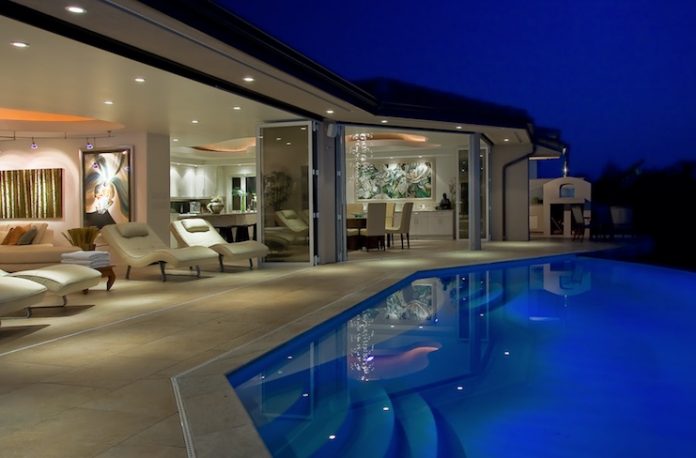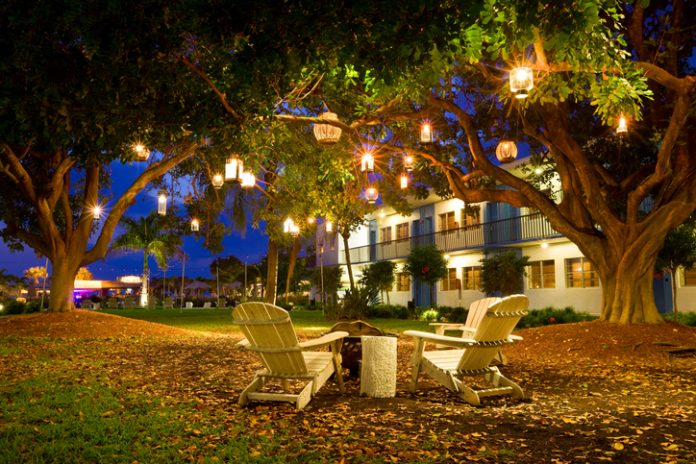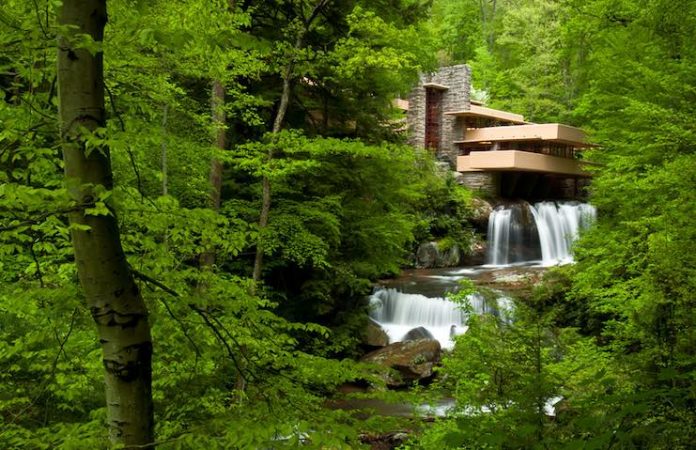People in the United States, on average, spend about 90 percent of their time indoors, according to the U.S. Environmental Protection Agency. However, this status quo hasn’t necessarily come about through choice, and today’s “indoor generation” is fighting back. Their weapon? Design.
Demand is rising for hotels to start blurring the lines between the inside and the outside. Here are seven of the most effective ways they’re doing it.
1Bifold Doors

A one-up to the French doors and sliding doors that were popular in the 1990s and 2000s, bifold doors allow entire sides of rooms and even buildings to be completely opened up. Even when bifold doors are closed, they let in plenty of natural light, making rooms feel more open. Unlike many patio-style windows of old, bifold doors are also thermally efficient thanks to modern insulation engineering techniques.
2Vertical Gardens

Also known as living walls, vertical gardens are essentially a collection of wall-mounted flowers, grasses, or herbs. A number of hotels and bars around the world already feature striking vertical gardens. The living wall in the lobby of Hotel ICON in Hong Kong is one of the most eye-popping examples from the world of hospitality design. Designed by botanist Patrick Blanc, this vertical garden is tsunami-shaped and includes more than 70 different species of plant.
3Bioclimatic Architecture

Bioclimatic architecture is being hailed as the antidote to unnatural air conditioning. At the vanguard of this technology are the architecture experts at T3 Architecture Asia. By using covered, open-air corridors, ventilated roofs, fiberglass insulation, and natural materials, the firm has been able to design buildings, including hotels, that remain cool, even in the searing heat of Ho Chi Minh City. Guests to these spaces have the benefit of feeling fresh, natural air on their skin rather.
4Outdoor Bathrooms

In areas where there is year-round warmth, outdoor bathrooms are becoming increasingly popular. Some of the world’s plushest hotels and lodges allow their guests to bathe beneath the sky or stars. At Belmond Khwai River Lodge in Botswana, the outdoor bathrooms feature copper-sided roll top baths and rain showers. At the Anantara Sanya in Thailand, the suites come with balconies topped with freestanding baths, which look out over the sea.
5Grand Garden Lighting

Outdoor lighting has really graduated from the realms of simple tiki torches or basic uplighters over the past years. Today, hoteliers can style outdoor patios, terraces, and garden spaces with lighting that wouldn’t look out of place in the interior of an English manor house—think outdoor chandeliers and candelabras. Many of them come with solar-powered bulbs, too.
6Organic Architecture

There are two interpretations of the term organic architecture, and both blur the lines between inside and outside. The first interpretation refers to the design of buildings to make them look like forms from nature. The lotus flower-shaped Lotus Temple in New Delhi is one of the most literal examples of organic architecture in this respect. The second interpretation refers to the use of natural and locally sourced materials in the construction of buildings. Take the Hotel Lucrezia in Italy, for example—its foundations are made from natural local stone, its walls are constructed from raw earth bricks made in the local tradition, and its ceilings are crafted from canes and wood sourced from the local area.
7Clever Levels

One surefire way to create a flow between outdoor and indoor spaces is to ensure that both are on the same level. Design patios and gardens so that users don’t have to step down or up when they cross from one space to another. Try to use the same floor linings or coverings when combining indoor and outdoor spaces, so there’s no sense of transition between the interior and exterior.











